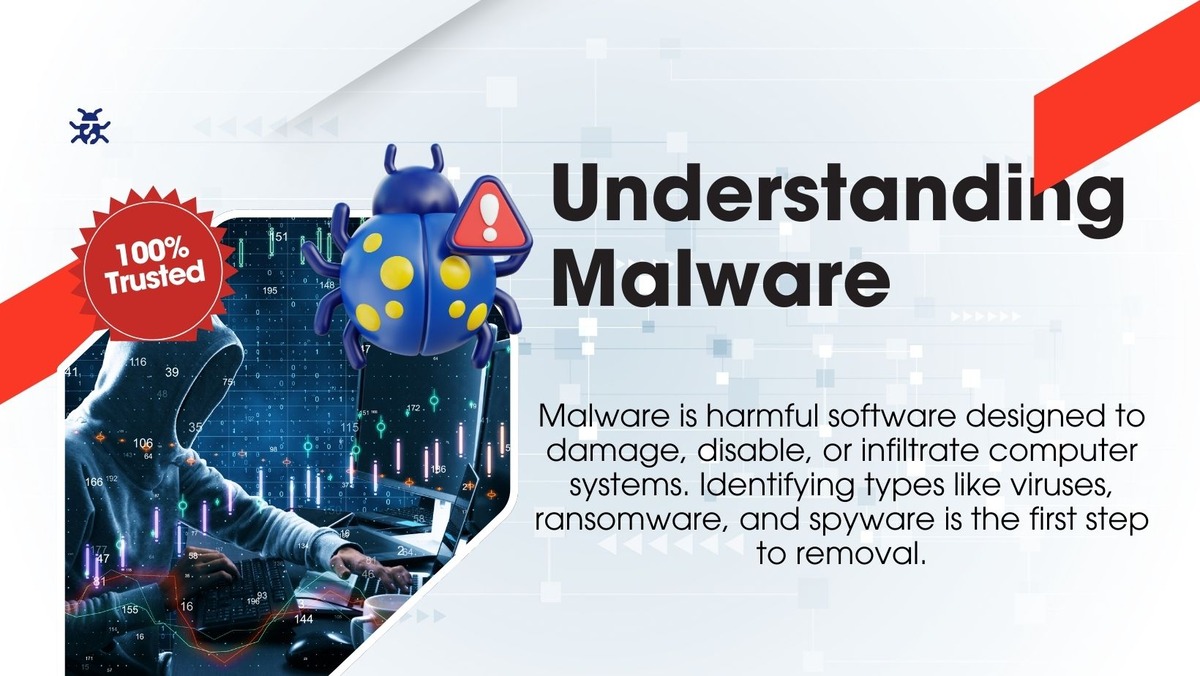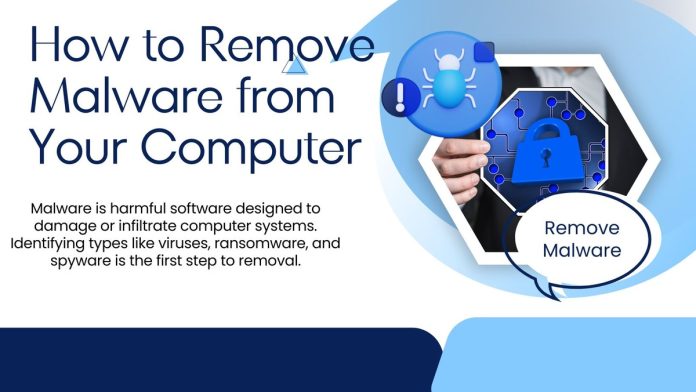Understanding Malware

Malware consists of harmful software which means malicious software designed to deliver damage or disable or penetrate computers and computer systems. The identification of malicious software categories which include viruses alongside ransomware and spyware represents the beginning of their resolution process.
How Does Malware Infect Computers?
Malware can enter your system through compromised websites, email attachments, or unsecured networks, much like pests finding their way into a home through small openings.
Preparing to Remove Malware
Ensure Data Backup
Before attempting to remove malware, ensure that all important data is backed up. This is akin to safeguarding your valuables before starting a major home renovation project.
Enter Safe Mode
Restart your computer in Safe Mode to prevent malware from causing more damage. This is similar to turning off the water supply before fixing a plumbing issue.
Steps to Remove Malware
Step 1: Use anti-malware Software
Install a reputable antimalware tool to scan and remove malware from your computer. This is like using the right tools to fix structural problems effectively.
Step 2: Update Your Software
Ensure that your operating system and all installed software are up-to-date with the latest security patches, similar to upgrading building materials to more durable and efficient ones.
Step 3: Clean Up Your Browser
Clear your browser’s history and cache and reset your browser settings to eliminate any traces of malware, just like clearing out debris after a demolition phase.
Step 4: Disconnect from the Internet
Disconnect your computer from the internet to prevent further malware downloads or data leakage, akin to isolating a damaged area to prevent further issues.
Step 5: Check System Performance
After removing malware, monitor your computer for any unusual activity to ensure all issues are resolved, similar to a post-renovation inspection.
Maintaining a Malware-Free Computer
Regular Scans
Schedule regular scans with your antimalware software to catch and remove malware early, much like routine inspections in building maintenance.
Update Security Measures
Keep your security software and systems updated to defend against new threats, just as you would maintain home security systems.
Educate Yourself and Others
Stay informed about malware threats and safe computing practices, spreading this knowledge just as safety practices are shared in the construction field.
Conclusion: Protecting Your Digital Home
Just as a well-maintained home provides safety and comfort, a computer free from malware ensures a secure and efficient digital environment. Regular upkeep and vigilance are key to both.
FAQs About How to Remove Malware
How to remove malware to enhance your understanding and safeguard your computer. Here, we provide clear answers and practical tips to help you maintain a secure digital environment.
Q:1: What is the best antimalware software?
Ans. Reputable antimalware software includes options like Malwarebytes, Norton Antivirus, and McAfee. Choose one that fits your needs and budget.
Q:2: How often should I run a malware scan?
Ans. It’s advisable to run a malware scan at least once a week, or more frequently if you frequently download files or browse high-risk websites.
Q:3: Can malware be completely removed?
Ans. Yes, with effective antimalware tools and following proper cleaning procedures, malware can usually be completely removed from a computer.
Q:4: What are the signs that my computer is infected with malware?
Ans. Common signs include slower computer performance, unexpected ads or pop-up windows, and programs starting or closing automatically.
Q:5: Is it safe to remove malware myself?
Ans. Yes, with reliable antimalware software and by following the steps outlined in this guide, you can safely remove malware yourself.
Q:6: What should I do if malware keeps coming back?
Ans. Ensure your antimalware software is up-to-date, consider a full system reset, and seek professional help if the problem persists.
Q:7: How can I prevent malware infections?
Ans. Keep your software updated, use strong, unique passwords, avoid clicking on suspicious links, and always use a reputable antimalware program.
Q:8: Does antivirus software protect against all types of malware?
Ans. Most antivirus software provides broad protection against various malware types, but ensure your software specifically includes features like anti-spyware and anti-ransomware for comprehensive protection.
Q:9: Can malware spread to connected devices?
Ans. Yes, malware can spread to any connected device within the same network. Ensure all devices are protected with antimalware software.
Q:10: What is the difference between a virus and malware?
Ans. A virus is a type of malware that replicates by inserting its code into other programs. Malware is a broader term that includes viruses, spyware, ransomware, and more.
Read More: What Are The Five SaaS Security Issues?

